Click on images to enlarge

infestation (Photo: Sheldon Navie)

habit (Photo: Sheldon Navie)
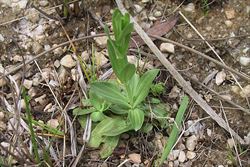
rosette of lower leaves (Photo: Jackie Miles and Max Campbell)
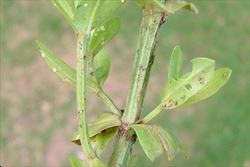
close-up of stems (Photo: Sheldon Navie)

leaves (Photo: Sheldon Navie)
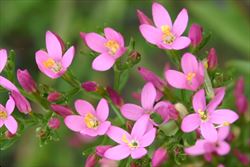
flowers (Photo: Trevor James)
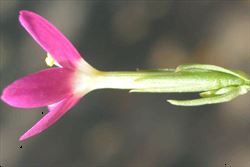
close-up of tubular flower with relatively short sepals (Photo: Greg Jordan)
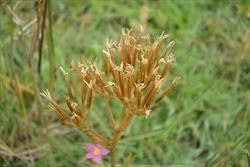
mature fruit (Photo: Sheldon Navie)
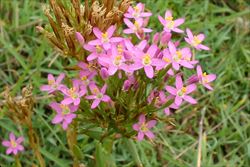
densely clustered pink flowers (Photo: Sheldon Navie)

branched centaury (Centaurium tenuiflorum), with magenta flowers (Photo: Jackie Miles and Max Campbell)
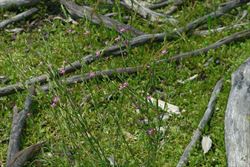
spike centaury (Schenkia australis), with loosely arranged flowers (Photo: Jackie Miles and Max Campbell)
Scientific Name
Centaurium erythraea Rafn.
Synonyms
Centaurium littorale (Turner) Gilmour (misapplied)Centaurium minus Garsault (misapplied)Centaurium umbellatum Gilib.Erythraea centaurium (L.) Borkh. (misapplied)
Family
Gentianaceae
Common Names
bitter herb, bitterherb, centaury, centaury gentian, centory, Christ's ladder, common centaury, European centaury, feverwort, filwort, lesser centaury, red centaury
Origin
Native to Europe, the Mediterranean region (i.e. the Azores, the Canary Islands, Algeria, Libya, Morocco, Tunisia, Turkey, Cyprus, Israel, Jordan, Lebanon and Syria) and western Asia (i.e. Afghanistan, Pakistan, Iran, Iraq, Armenia, Azerbaijan, Georgia, southern Russia, Tajikistan, Turkmenistan and Uzbekistan).
Naturalised Distribution
Widely naturalised throughout the wetter regions of Australia (i.e. in south-eastern, central and northern Queensland, eastern New South Wales, the ACT, the southern and central parts of Western Australia, many parts of South Australia, Tasmania and throughout Victoria).
Also widely naturalised in other parts of the world.
Notes
Common centaury (Centaurium erythraea) is a significant environmental weed in Victoria and Western Australia. This species is especially common in native pastures and damp habitats and is present in numerous conservation areas in southern Australia (e.g. Lane Cove National Park in New South Wales, Yarra Bend Park and Brimbank Park in Victoria, Naracoorte Caves Conservation Park and Coorong National Park in South Australia, South Bruny National Park in Tasmania and the Mambo Wetland Reserves in New South Wales).
Common centaury (Centaurium erythraea) is also listed as a weed of threatened natural temperate grasslands in the ACT and of similar grassland communities in the north-western parts of Tasmania and the New England Tablelands region in northern New South Wales. It is also widespread in native grasslands and grassy woodlands in Victoria.
In south-western Western Australia, common centaury (Centaurium erythraea ) is one of the most common exotic species found growing in threatened shrubland and woodland plant communities found on Muchea Limestone soils. While it is small in stature and may not threaten plant communities as a whole, common centaury (Centaurium erythraea ) may pose a threat to ground dwelling, endangered, native plants that grow in them (e.g. creeping dusty miller, Spyridium obcordatum, in Tasmania and the metallic sun orchid, Thelymitra epipactoides, in Victoria).

